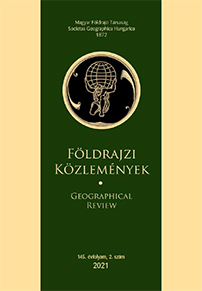Integrated Development of Cultural Economy at the Hungarian-slovak Border
Abstract
Based on the experiences of a specific project development work, this study seeks to answer why there have not been many successful projects targeting the valorization of cultural heritage at the Hungarian-Slovak border which have resulted in a stronger cohesion of the borderland. It also examines how similar initiatives in the future could contribute to this aim. For this purpose, the authors first provide an overview of the major issue-relevant conclusions of border studies literature, with special emphasis on the topic of subjective (especially cultural) distance. Subsequently, they examine the values and mistakes of the INTERREG programmes supporting cross-border cooperation, highlighting the necessity of integrated developments. In the third part of the study, based on the experiences gained from the INTERREG EUROPE projekt called WAVE targeting the valorization of water-based cultural heritage and implemented with the participation of the Ister–Granum EGTC, as well as the territorial action plans applied by the Slovakia-Hungary INTERREG V-A programme, they make a proposal on the cross-border integrated development of cultural economy.
Copyright (c) 2021 Gyula Ocskay, Tamás Hardi

This work is licensed under a Creative Commons Attribution-NonCommercial-NoDerivatives 4.0 International License.



